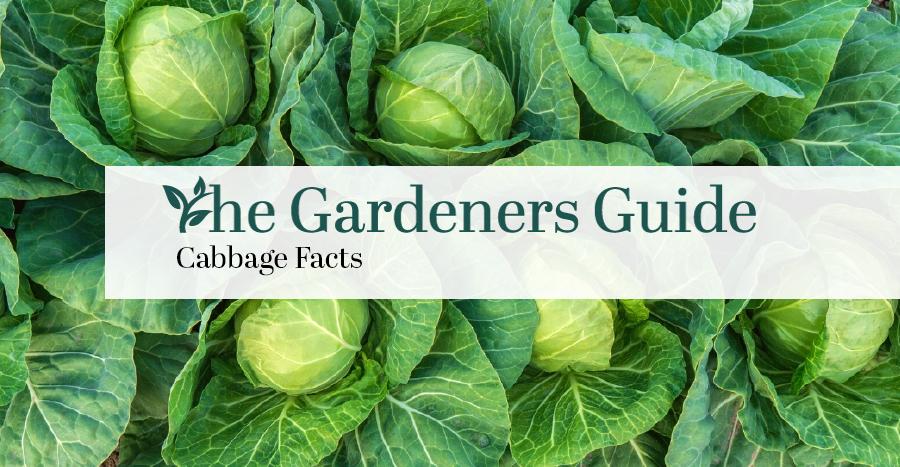Cabbage Care: Planting, Growing, and Harvesting Cabbages
Cabbage, scientifically known as Brassica oleracea capitata, is a hardy biennial plant that belongs to the cruciferous family. It has been cultivated for centuries and is one of the oldest known cultivated vegetables. Cabbages are widely grown and consumed across the world due to their versatility and nutritional value.
The plant has a compact round or oval-shaped head with tightly wrapped leaves in various shades of green, purple, or white. Typically, cabbages have a firm texture and a crunchy taste when eaten raw. However, they can also be cooked in numerous ways, making them an excellent choice for soups, stews, stir-fries, salads, or even pickling.
In addition to being delicious and versatile in the kitchen, cabbages are also highly nutritious. They are rich in essential vitamins such as vitamin C and vitamin K, as well as dietary fiber. These cruciferous vegetables also contain important nutrients like potassium and manganese while providing antioxidants that help protect against chronic diseases.
Planting
- Cabbage is a cool-season crop that thrives in temperatures between 55°F and 75°F. It is recommended to start seeds indoors about 6-8 weeks before the last frost date in your area. Transplant the seedlings outdoors when they have at least 3-4 true leaves. Or in fall , you can directly sow cabbage seeds in the ground about 6-8 weeks before the first expected frost.
- Cabbage plants require full sun for optimal growth. They need about 6 hours of direct sunlight each day. If you are growing cabbage in a location with partial shade, make sure it still gets enough sun to promote healthy leaf development.
- Proper spacing is crucial for cabbage plants as it allows good air circulation and prevents the spread of diseases. Space your plants about 12-18 inches apart, with rows spaced around 2 feet apart. This will ensure that each plant has enough room to grow and form heads without overcrowding.
- It’s important to note that cabbage does not tolerate hot weather well, so avoid planting during the peak summer months or when temperatures consistently exceed 80°F. High heat can cause premature bolting (flowering) and affect the quality of the heads formed.
Growing
- Proper watering is essential for healthy seedling growth. It’s important to keep the soil consistently moist but not soggy, as cabbage seedlings are susceptible to damping off if overwatered. Water the seedlings from below by placing them in a tray filled with water and allowing them to soak up moisture through their roots. This ensures that water reaches the plant’s root system instead of just wetting the surface.
- Once your cabbage seedlings have developed a strong root system and are around 4-6 weeks old, they are ready to be transplanted into your garden beds or containers. Plant them about 12-18 inches apart, leaving enough space for each plant to grow and expand comfortably. Make sure to fill any gaps around the seedling with soil, firmly pressing down on it to eliminate air pockets. This will help establish good contact between the roots and soil, promoting better nutrient absorption.
- After transplanting your cabbage seedlings, you may need to water them every 2-3 days initially until they establish themselves in their new environment. Gradually reduce the frequency of watering as plants mature, while ensuring that there is enough moisture in the soil at all times.
- To ensure abundant harvests of healthy cabbages, it’s necessary to provide proper nourishment throughout their growth cycle
Remember: Download our Fact Sheet Below!
You’ll be able to refer to this reference whenever you need to look up the ideal growing conditions.

Recommended Varieties
When it comes to cabbage, there are numerous varieties to choose from, each with its own unique flavor and characteristics. One highly recommended variety is the Savoy cabbage. With its crinkled leaves and mild flavor, Savoy cabbage is perfect for adding a subtle crunch to salads or stir-fries. Another popular choice is the Red Cabbage, which not only adds a vibrant color to your dishes but also provides a slightly sweeter taste compared to green varieties.
For those who prefer a more compact head of cabbage, the Napa cabbage is an excellent option. This Chinese variety has a milder taste and works well in Asian-inspired recipes like stir-fries or kimchi. Lastly, if you’re looking for something out of the ordinary, consider trying the Pointed Cabbage. With its cone-shaped head and delicate flavor, this variety brings a touch of elegance to any meal.
Ultimately, choosing the right cabbage variety depends on personal preference and intended use. Whether you opt for the traditional green varieties or venture into more unique options like Savoy or Pointed Cabbage, experimenting with different flavors and textures will undoubtedly bring new excitement to your kitchen creations.
Harvesting and Storing
When to harvest:
- Cabbage is ready for harvest when the head feels firm and dense. This usually occurs between 70-90 days after planting.
- The outer leaves can be gently lifted up to check on the size and density of the head. If it feels solid and reaches its expected size, it’s time for harvesting.
How to know When it’s ready:
- Another way to determine if a cabbage is ready for harvest is by observing its appearance. The head should have a compact shape with no loose or floppy leaves protruding from it.
- Color can also be an indicator as green cabbages should have a vibrant, deep green hue while red cabbages tend to deepen in color as they mature.
How to harvest:
- To harvest cabbage, begin by using a sharp knife or garden shears to make a clean cut through the stem right below the head.
- It’s essential not to remove more than one-third of the plant at once, as leaving some outer leaves attached allows for continued growth.
Storing techniques and methods:
- After harvesting, cabbage needs proper storage techniques so that you can enjoy its freshness even weeks later. Firstly, remove any damaged or wilted outer leaves. They can hasten spoilage if left with the harvested heads.
- Wrapping each individual cabbage head in paper towels before storing it in perforated plastic bags will help retain their moisture content without encouraging decay.
- Compatible storage options include keeping them in cold cellars or refrigerators with temperatures around
Gardening Products
Interesting facts
Taste is an enigmatic sensation that can transport us to different times and places. So, what does cabbage taste like? The flavor of this versatile vegetable ranges from mild and slightly sweet when eaten raw, to earthy and subtly bitter when cooked. Its tender leaves have a crisp texture that gives way to a satisfying crunch, while its dense core provides a juicy bite. Cabbage’s distinctive taste has made it a staple ingredient in dishes around the world, from sauerkraut in Germany to kimchi in Korea.
Beyond its culinary uses, cabbage holds hidden mysteries worth exploring. Did you know that this leafy plant has been cultivated for thousands of years? Ancient Egyptians revered cabbage for its medicinal properties, using it as a treatment for everything from constipation to snakebites. In Celtic folklore, cabbage was believed to possess supernatural powers and was used in protective rituals against evil spirits. This remarkable plant has not only nourished our bodies but also played a role in our cultural beliefs throughout history.
Cabbage is often associated with symbolism and meaning across various cultures. It is thought to represent prosperity and wealth due to its round shape resembling coins or money bags. In New Year traditions around the world, including Germany and Austria, consuming dishes containing cabbage is believed to bring good fortune for the year ahead. Additionally,this hardy vegetable’s resilience during colder seasons has led some cultures to see it as symbolizing endurance and strength.
Pest and Diseases:
- Cabbage worm: cabbage worms are usually green in color and feed on the leaves of the plant. To combat this problem, regular inspections and handpicking of these worms can be an effective solution. Additionally, using floating row covers or applying organic insecticides can help control their population.
- Clubroot: This fungal infection targets the roots of the plant, causing them to become swollen and deformed. To prevent clubroot, it is essential to maintain a pH level between 6.5 and 7.0 in your soil as this disease thrives in acidic conditions. Crop rotation, avoiding overhead irrigation, and improving drainage are also recommended practices.
- Aphids: These tiny insects feed on plant sap, resulting in stunted growth and distorted leaves. Introducing natural predators such as ladybugs or lacewings can help control aphid populations without resorting to chemical treatments that may harm beneficial insects.
Download Our Fact Sheet
Whether you’re a seasoned gardener or just starting out, it’s important to understand the basic needs of these plants to ensure successful growth and bountiful harvests. That’s why we’ve created a downloadable Fact Sheet for your journal or garden planner, so you have all the key information at your fingertips.
Our fact sheet provides a quick overview of details on your plants care. You’ll be able to refer to this reference whenever you need to look up the ideal growing conditions for this plant, including soil type and temperature requirements. With this quick reference guide in hand, you can easily consult it whenever you need reminders about caring for your plants.
This article may contains some affiliate links. By making a purchase through the affiliate links in this article, you are supporting the author and granting them a small commission.










Leave a Reply
Want to join the discussion?Feel free to contribute!